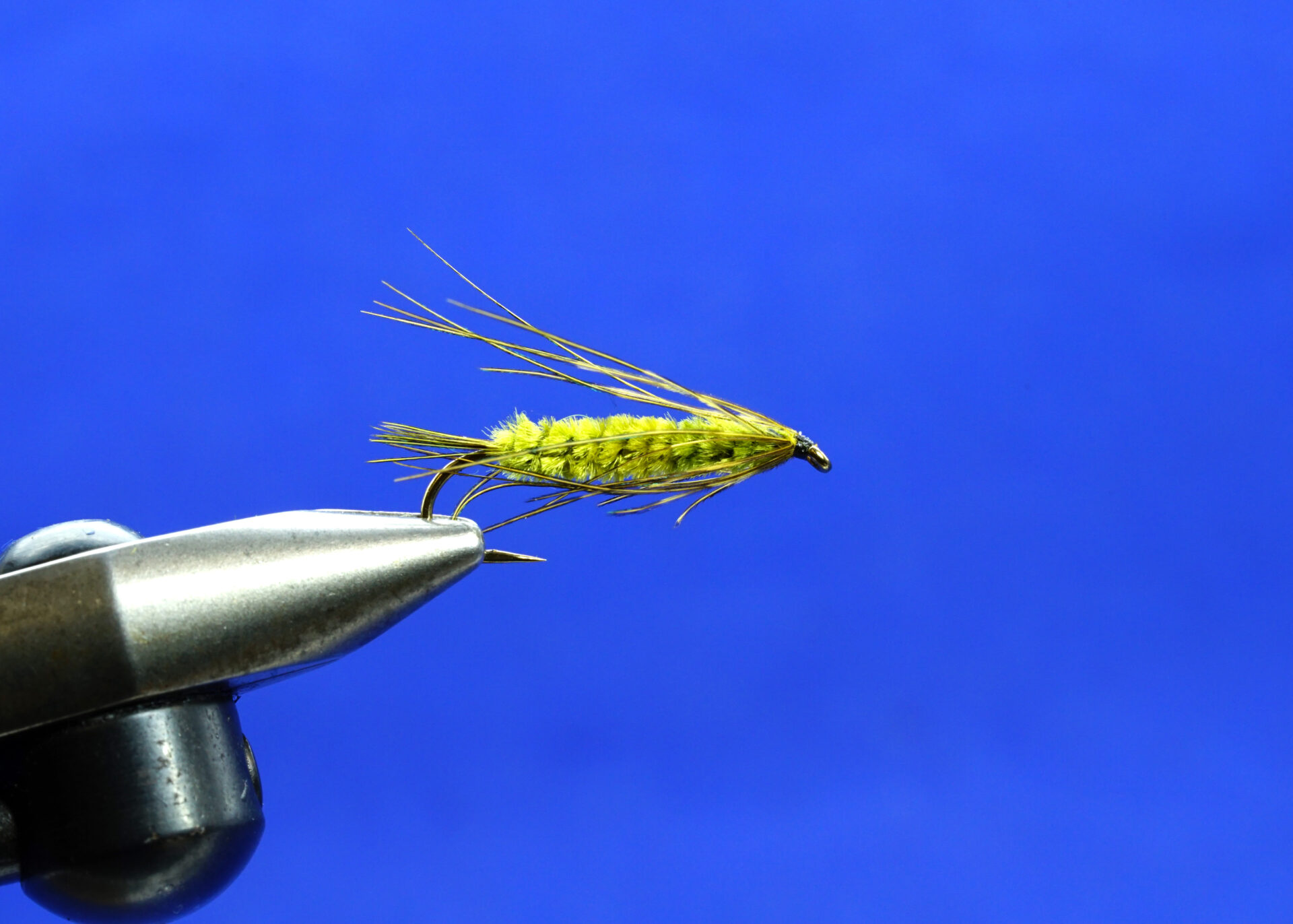When John Kent managed Tunkwa Lake Resort, he enjoyed a lot of success fishing a lightly dressed Carey Special. Gil’s Monster, a pattern designed by Washington state fly fisher and tyer Gil Nyerges inspired John’s Carey, a pattern that featured a black body and a sparse pheasant rump tail and hackle. John’s version maintained the sparse lines of Gil’s Monster but swapped the original black chenille body for one of dark olive chenille. Gil’s Monster and his Nyerges Nymph were two flies featured within the pages of the iconic book Flies Of The Northwest by the Inland Empire Fly Fishing Club based in Spokane, WA.
Advertisement
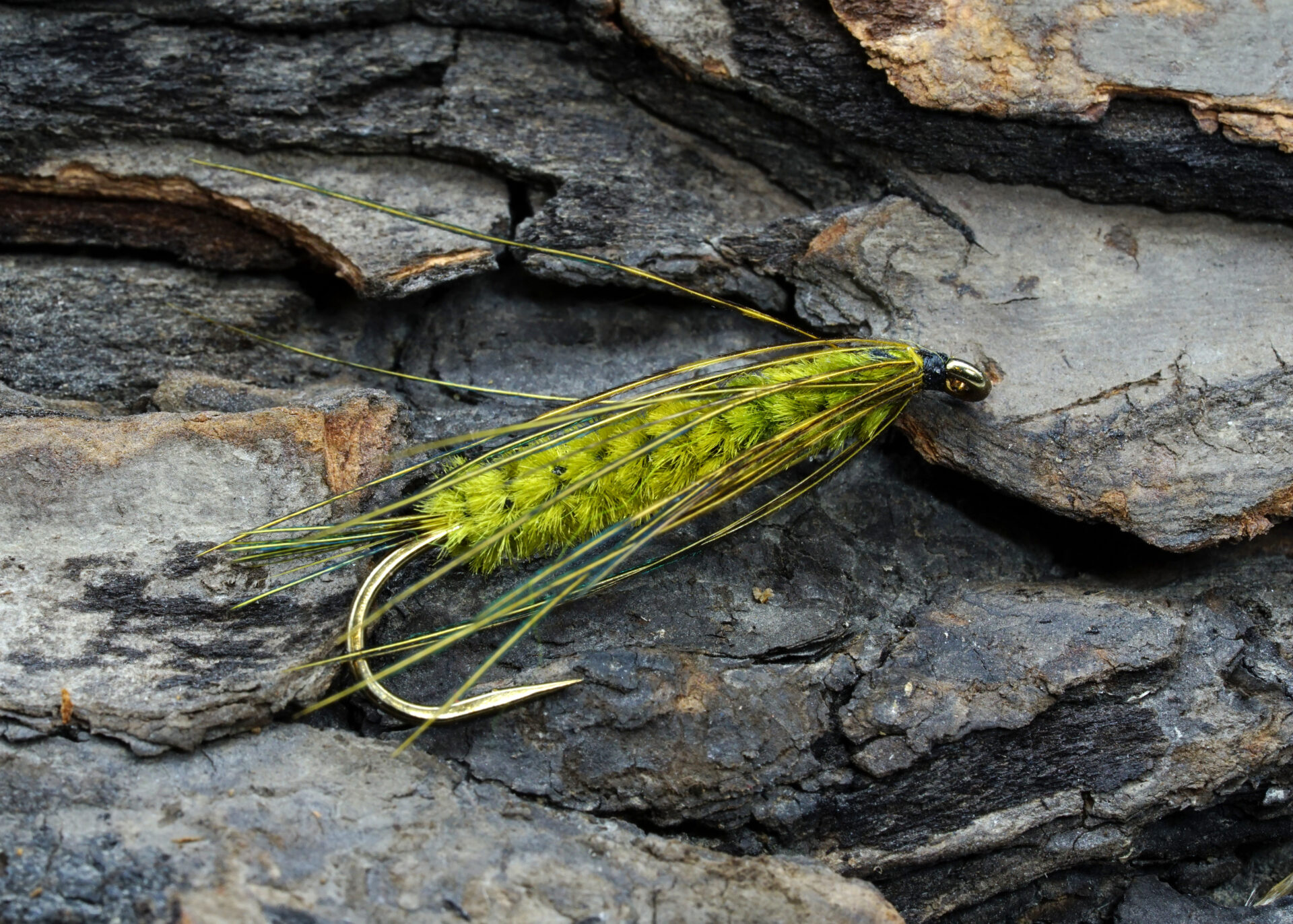
After enjoying many memorable days with this fly, John decided to tie some up for the lodge’s store so other anglers could enjoy the same success he had. One day, a customer came into the lodge office looking for some flies. John suggested he try one of his dark olive Carey’s. Seemingly unimpressed with the fly’s sparse, slender lines, the customer said, “This fly looks like some piece of crap Carey Special you would buy at K-Mart!” And, as some would say, the rest is history. Since that day, John’s K-Mart Special has gone on to become a BC staple. It often appears on many fly fishers’ must have BC stillwater patterns list, along with many of John’s other creations, including the Rusty Nail, Bleeding Elvis, Guns and Roses, Hog Magnet and the Pumpkin Head.
A properly tied K-Mart Special is a delicate, slender tie. John feels the sparse nature of the tail and hackle is a critical component of the fly’s success. When fished using cast and retrieve techniques, coupled with an intermediate or clear intermediate line and a slow varied strip or hand twist retrieve, the tail and hackle breathe and come to life. A brisk retrieve causes the pheasant rump to tuck tight against the body, eliminating the fly’s lifelike movement. John also mentioned that when sedges or caddis are emerging, fishing a K-Mart Special on a floating line with a long, 15-foot leader and allowing the fly to wind drift and swing with little to no retrieve can be deadly.
Advertisement
John prefers dyed yellow pheasant rump for the hackle on the K-Mart Special. Due to the naturally dark nature of pheasant rump, after a dip in a yellow dye bath, it turns a beautiful golden olive, an excellent colour for other patterns besides the K-Mart Special.
The short, gape length tail consists of eight to 10 individual fibres. The hackle is equally sparse. One-and-one-half wraps are more than enough. Proper hackle length is also essential. The tips of the pheasant rump feather should extend no further back than the tips of the tail. Once the fly is complete, John gives the hackle a firm pinch along all sides to encourage the fibres to flow along the body.
Advertisement
John said this is arguably the most challenging aspect when tying his K-Mart Special, finding pheasant rump with the correct fibre length. If possible, purchase a pheasant rump patch. Pheasant rump patches offer the best source of consistent hackle, as you can efficiently sort through a patch to select the appropriate feathers. Loose or strung pheasant rump must be pulled from the package and sorted through. Sorting the feathers is a messy, time-consuming process. I also find that the packaging process can damage the delicate tips of the feathers.
Use fine dark olive chenille for the body. Avoid using medium chenille, as it results in a bulky body that negatively impacts the fly’s performance. Fine Sparkle Chenille is another body option. Sparkle Chenille features a silver core and the same Rayon fibres common to standard chenille. John has also tried variations featuring various ribs over the chenille body. Results were mixed at best, so he stopped doing it.
Although John ties almost all of his K-Mart Specials unweighted on 3XL size eight hooks, he has also successfully experimented by adding a hot orange tungsten bead. Rainbow trout, in particular, show an affinity to hot orange. Adding a touch of hot orange to almost any stillwater pattern, such as a bead, dubbed hot spot or thread head is always a wise option.
John’s K-Mart Special is a pattern that belongs in every stillwater fly box. It also has some younger siblings that also deserve mention. The Walmart Special features a black chenille body, coupled with a tail and hackle of dyed wine (burgundy) pheasant rump. Tied on a smaller 2XL hook, the Mini Mart features a body of dark olive dubbing and the same dyed yellow pheasant rump hackle and tail. The two features common to all these variations are the sparse tail and hackle of the K-Mart Special and their ability to catch fish.
How to Tie the K-Mart Special
Designed by John Kent
- Hook: #8 3XL
- Thread: Black
- Tail: Pheasant rump fibres, dyed yellow
- Body: Chenille, fine, dark olive
- Hackle: Pheasant rump fibres, dyed yellow
Tying Instructions
- Cover the hook shank with tying thread. Tie in eight to 10 dyed yellow pheasant rump feathers to form a short, sparse, gape-length tail. Leave the tying thread hanging at the base of the tail.
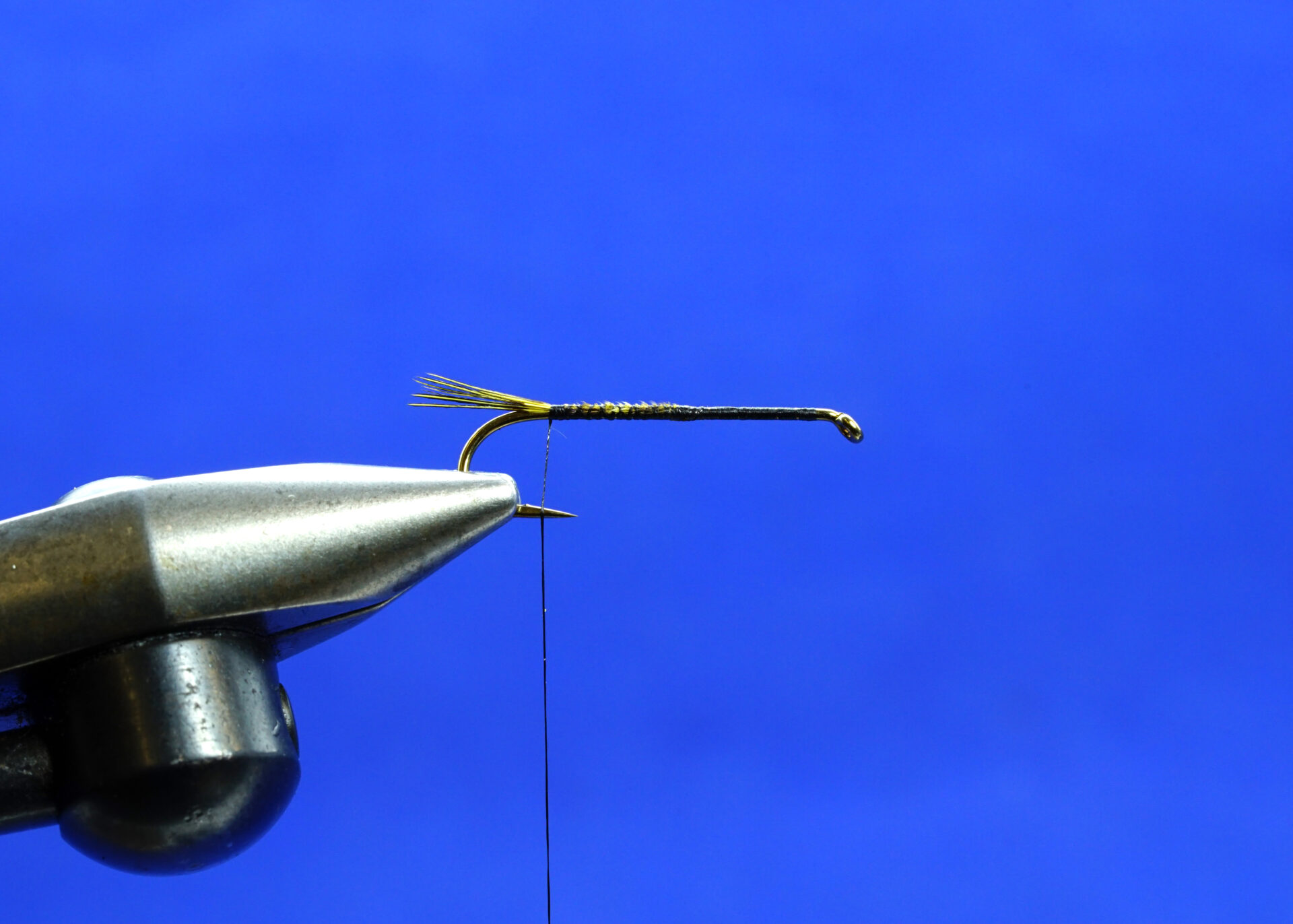
- Strip the fibres from a length of fine, dark olive chenille to expose the thread core. Tie in the chenille by the exposed core at the base of the tail.
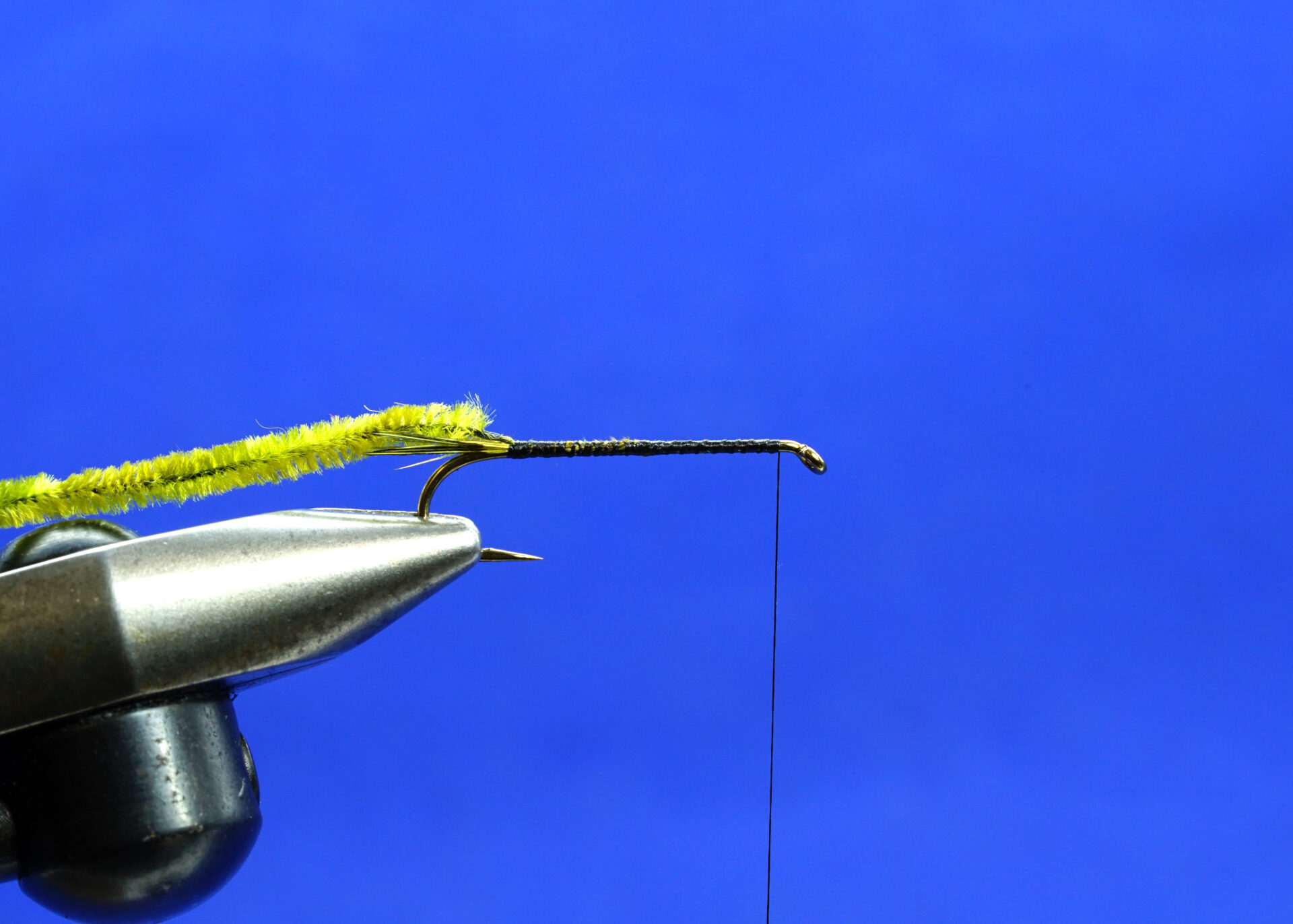
- Form the body by winding the chenille forward using close-touching turns. Tie off the chenille about an eye width back from the hook eye. Remove the excess chenille.
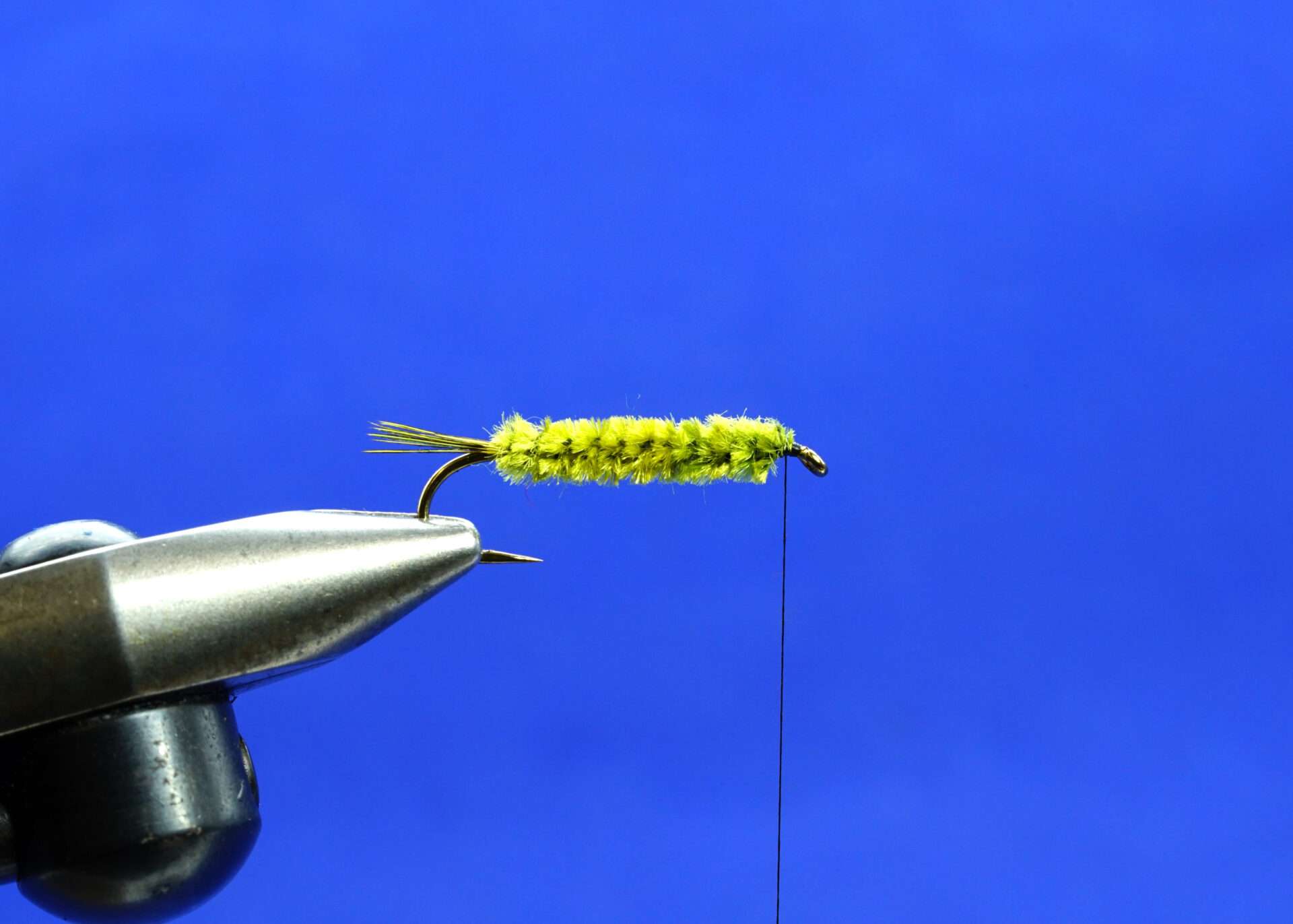
- Select a dyed yellow pheasant rump feather with fibres that extend no further back than the tip of the gape-length tail. Remove the soft flue from the base of the feather. Stroke the fibres back to expose the tip. Trim the tip section from the feather, leaving a small triangular tie-in anchor.
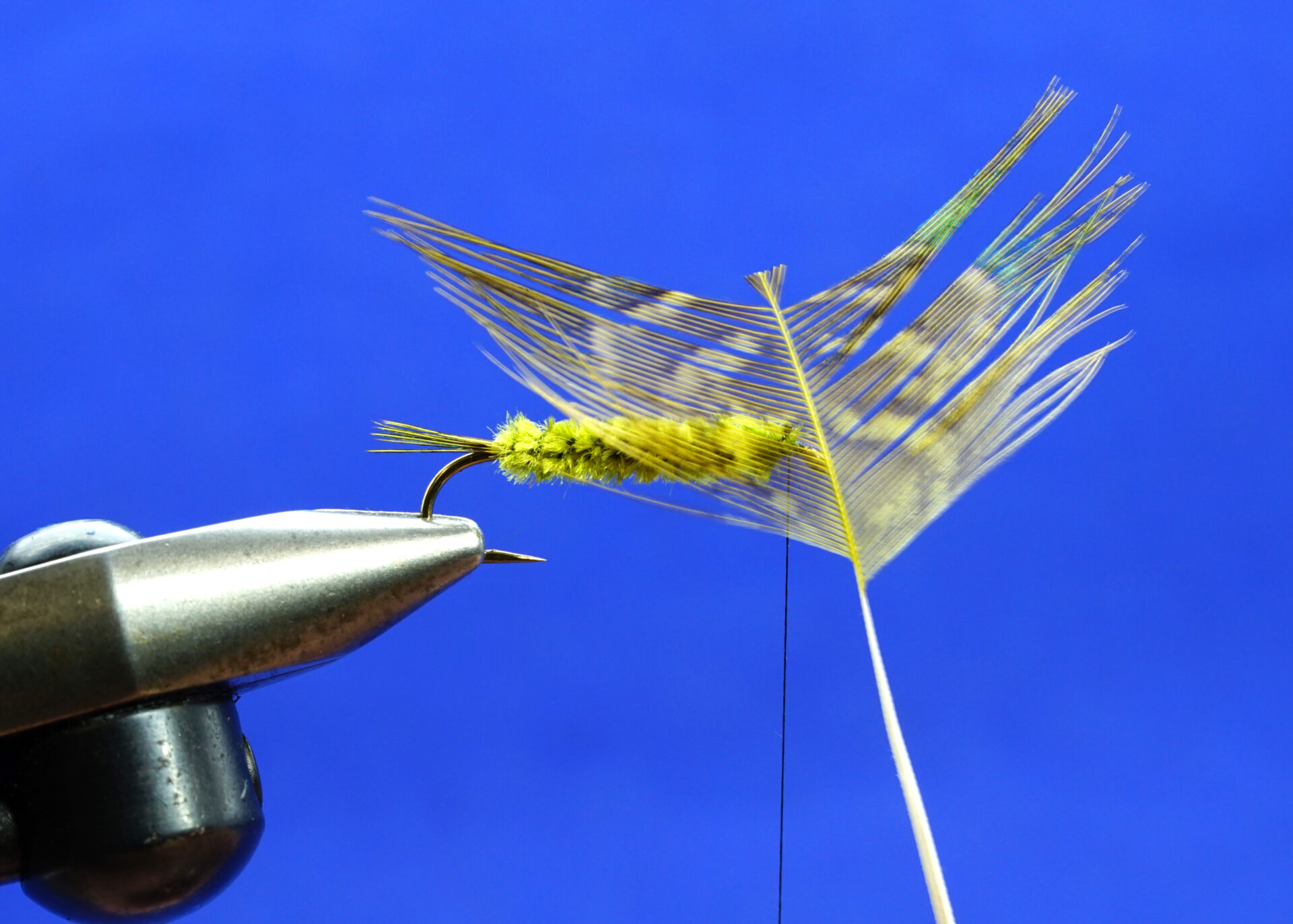
- Tie in the prepared pheasant rump feather by the triangular tie-in anchor. Form a sparse hackle by winding the pheasant rump feather one-and-one-half times in front of the body.
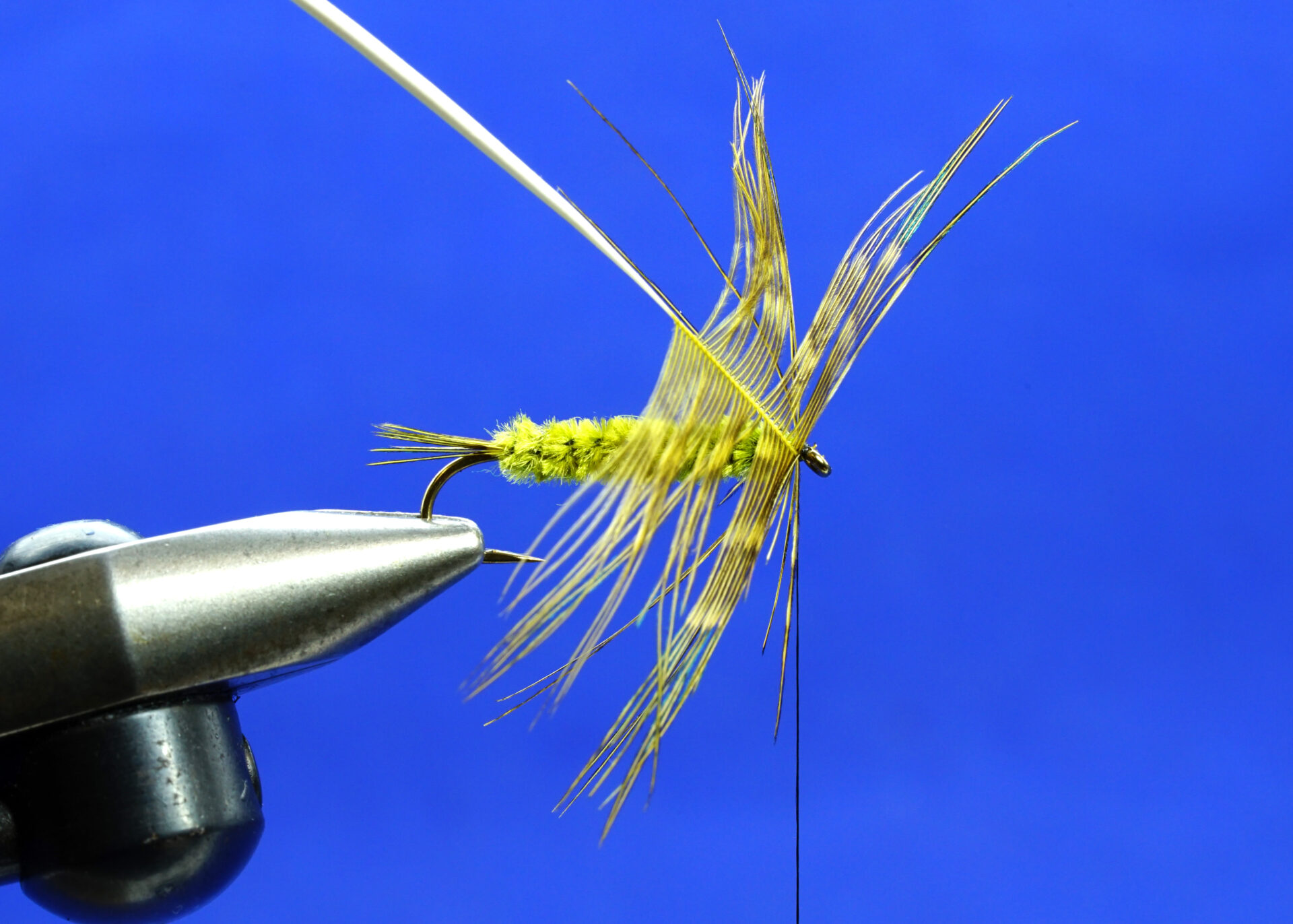
- Tie off the hackle and trim the excess. Build a neat head, whip finish and apply head cement to complete the fly.
